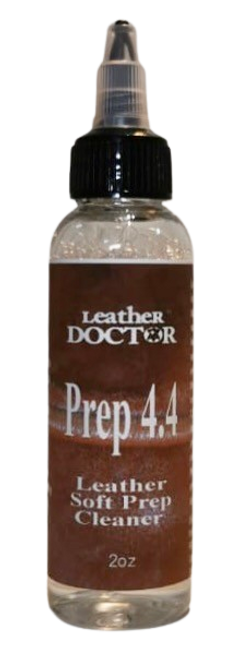Leather Soft Prep Cleaner 4.4 by Leather Doctor is a specialized pH 4.4 solution designed for deep cleaning heavily soiled, pH-sensitive leather, nubuck, and suede.
- This advanced formula effectively removes accumulated dirt, silicone shine, sticky residues, and greasy stains while ensuring a safe and effective cleaning process.
Deep Cleaning Solution for pH-Sensitive Leather, Nubuck, and Suede
![]() Key Benefits:
Key Benefits:
- Deep cleans heavily soiled Leather, Nubuck, and Suede
- Removes accumulated dirt, grease, and sticky residues
- Eliminates silicone shine for a natural finish
- Safe for pH-sensitive materials
Recommended Cleaning Process:
- Application: Apply Prep 4.4 to the affected area and agitate gently using a brush or eraser.
- Suspended Residue Removal: Follow up with cleaner Soft 3.8 to lift and remove any suspended residues.
- pH Balance Restoration: Complete the process with Rinse 3.0 to restore the natural pH balance of the leather.
For Stubborn Greasy Stains with Dye Components:
- When dealing with persistent stains such as ballpoint ink, blue jean dye, crayon, leather belt marks, plastic ink prints, newsprint, and stamp pad ink, follow up with Dye 7.9 for optimal dye stain removal.
Perfect for professional leather care and restoration.
![]() Instruction:
Instruction:
- Apply and work with a horsehair brush on heavily soiled areas
- Before it dries, suspended soiling is towel extracted until it shows clean.
- Soft 3.8 is applied over the cleaned area extended without a dry edge and extracted with a towel.
- Rinse 3.0 rinses over the cleaned area without leaving a dry edge and towel extract to a healthy squeak.
- Proceed with Hydrator 3.3.
- Continue with Fatliquor 5.0.
- Ends with Protector B.
Updated: April 5, 2025 | June 4, 2025 | June 22, 2025 | October 9, 2025 by Roger Koh.











